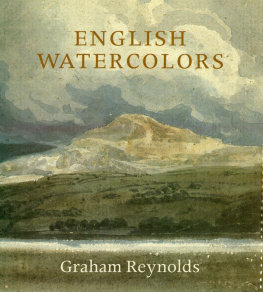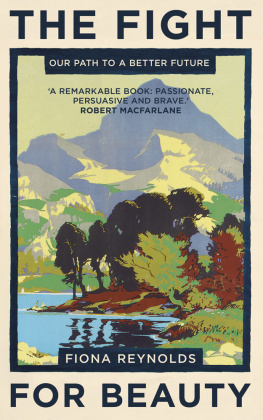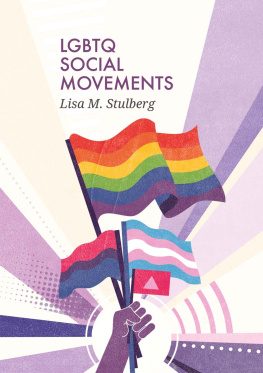Contents
Pagebreaks of the print version
The Children of Harvey Milk

Oxford University Press is a department of the University of Oxford. It furthers the Universitys objective of excellence in research, scholarship, and education by publishing worldwide. Oxford is a registered trade mark of Oxford University Press in the UK and certain other countries.
Published in the United States of America by Oxford University Press
198 Madison Avenue, New York, NY 10016, United States of America.
Oxford University Press 2019
All rights reserved. No part of this publication may be reproduced, stored in a retrieval system, or transmitted, in any form or by any means, without the prior permission in writing of Oxford University Press, or as expressly permitted by law, by license, or under terms agreed with the appropriate reproduction rights organization. Inquiries concerning reproduction outside the scope of the above should be sent to the Rights Department, Oxford University Press, at the address above.
You must not circulate this work in any other form and you must impose this same condition on any acquirer.
Library of Congress Cataloging-in-Publication Data
Names: Reynolds, Andrew, 1967 author.
Title: The children of Harvey Milk : how LGBTQ politicians changed the world / Andrew Reynolds.
Description: New York, NY : Oxford University Press, [2019] |
Includes bibliographical references.
Identifiers: LCCN 2018005204 (print) | LCCN 2018007708 (ebook) |
ISBN 9780190460969 (updf) | ISBN 9780190460976 (epub) | ISBN 9780190460952 (hardcover)
Subjects: LCSH: Gay rightsHistory. | Gay politiciansHistory. |
Sexual minority politiciansHistory. | GaysPolitical activityHistory. |
Sexual minoritiesPolitical activityHistory.
Classification: LCC HQ76.5 (ebook) | LCC HQ76.5 .R49 2019 (print) |
DDC 323.3/26409dc23
LC record available at https://lccn.loc.gov/2018005204
for
Atticus, Scout, Cecilia, Tess, and Owen
my children
Contents
This book has been a decade-long journey made with a handful of trusted companions. My Sancho Panza, Ali Stoyan: we tilted at windmills across the globe and no one could wish for a finer collaborator and travel companion. Leah Elliott, who picked up the reins and drove forward. Ines Blaesius, who joined for the final lap and pushed me over the line.
Pete Lesser gave great advice in the early days of conceptualizing the book and Kathleen Kearns helped me evolve the story structure. Dave McBride was my enthusiastic and patient editor at Oxford, ably assisted by Emily Mackenzie.
I cannot thank enough all the individuals who gave of their time and thoughts in interviews (listed in the appendix). Many others contributed along the way: Chad Blair, Javier Corrales, Christian Correa, Andrew Flores, Tanner Glenn, Charles Gossett, Rob Hayward, Andrew Hollingsworth, Olivia Jackson-Jordan, Kaitlyn Karcher, Caroline Kennedy, Anna Kirey, Marieka Klawitter, Mary Koenig, Dennis Mumby, Georges Nzongola-Ntalaja, Harry Prance, Tom Tuner, Sarah Pedersen, Marc Solomon, and Tana Stamper.
The manuscript was mostly written at Enzos (thank you, Heinz); Brown Bear Bakery (thank you, David and Lee); the public library on Orcas Island, Washington state; and Caf Driade and the Open Eye (thank you, Scott and Elizabeth) in Chapel Hill, North Carolina; and wrapped up in Berlin at the Hertie School of Governance (thank you, Mark). Thank you also to Morgan, Erin, Jeff, Mary, Emma, and Annie on Orcas for making life fun.
This book is for my children, but of course every day is for Layna (have you finished yet?) Mosley.
Gilbert and Harvey, San Francisco 1978
Gilbert Baker was nineteen when he was enlisted into the Army to go to Vietnam. But it turned out he was not a fighter. Rather than being discharged, he was transferred to San Francisco to be an Army nurse. Gilbert appreciated thisSan Francisco in the 1970s was gay Nirvana. After leaving the Army, Gilbert stayed on and became a fixture of the Castro. He taught himself to sew. He dressed up. He had fun. A couple of days before the June 25, 1978, Gay Freedom parade the Mayor of Castro Street called him on the phone. Gilbert, Harvey said. We need a logo, a symbol. We need a positive image that can unite us. Gilbert thought, I sew my own dresses, so why not a flag? Gilbert was twenty-seven. Harvey had just turned forty-eight. Five months later Harvey Milk was dead. The flag Gilbert created would live and grow.
In 1978 it was a rebel flag. The rainbow frightened people. The flag began with eight stripes, but Gilbert ran out of hot pink dye. What sort of gay man runs out of hot pink dye? Then they decided to hang the flags vertically on the lampposts of San Francisco, but it only worked if there was an even number of colors, so Gilbert changed the flag to six stripes. Indigo was out. To most straight people the rainbow flag symbolized queer things, unknown things, sparked uncomfortable thoughts and conversations, gave rise to images of isolation and shame, and then, disease.
Forty years later the pride flag is everywhereit makes people smile inside, feel warm, happier. Gay pride flags are given to children to wave. It is flown for head of state visits and above government buildings. It is the symbol of every pride parade in the world. A mile-long pride flag was flown in New York to celebrate twenty-five years of the gay rights movement; it was the largest flag ever made. The White House transformed its faade into a facsimile of Gilberts flag on the occasion of marriage equality coming to all of America in June 2015. In December 2016 when Vice Presidentelect Mike Pence moved into the Chevy Chase neighborhood outside of Washington, DC, before taking residence at the vice presidents house, his neighbors blanketed the streets with rainbow flags. We want to make clear how we feel about how other people should be treated, one neighbor told CBS News. I think hes a man who can use a little reminder of American values, so I think thats a good gesture, said another.
The history of Gilbert Bakers flag is much like the history of openly gay elected officials. Not everyone embraces them, but a lot more people do than they did forty years ago. In 1978 the flags were rare and exotic. There were a few on the streets of San Francisco and in urban gay enclaves, but not many. Likewise, there were very few openly gay elected officials anywhere in the world. By 1980 there had been Harvey Milk in San Francisco; Elaine Noble in Massachusetts; Nancy Wechsler, Jerry DeGrieck, and Kathy Kozachenko in Michigan, Alan Spear in Minnesota; Coos Huijsen in the Netherlands and Angelo Pezzana in Italy, but very few others. Today the rainbow flag is flown over large swaths of the globe where thousands of gay, lesbian, bisexual and transgender elected officials hold officefrom Brazil to Belgium, Cape Town to Canberra. The flag that spurred hate now is the universal symbol for love. The rainbow still symbolizes queer things, but queer is not so frightening anymore.
In Charles Dickenss novel Betsy Trotwood warns the young David Copperfield that it is in vain to recall the past, unless it works some influence upon the present. But who determines history, the lessons of the past? Individuals write it, but the big picture is painted with brushes way beyond the scope of one pair of hands. Humanity floats along on a pulsating tide of economic imperatives and social transformation. But the stories in this book demonstrate that individuals can change the flow of history. They divert the current, build tiny dams, and imperceptibly cause the river to take a slightly different course. At different places and in different times, leaders take on different tasks. While most politicians appear to revel in the darker sides of their personalities, a minority rise to the task. The legendary biographer Robert Caro notes that power doesnt always corrupt; sometimes it cleanses, but what power always does is reveal. Some leaders scrape away at the edges of long-welded-shut windows, while others continue the job by prizing open the frames to let fresh air force out the stale, giving the next generation the courage to jump through.





















